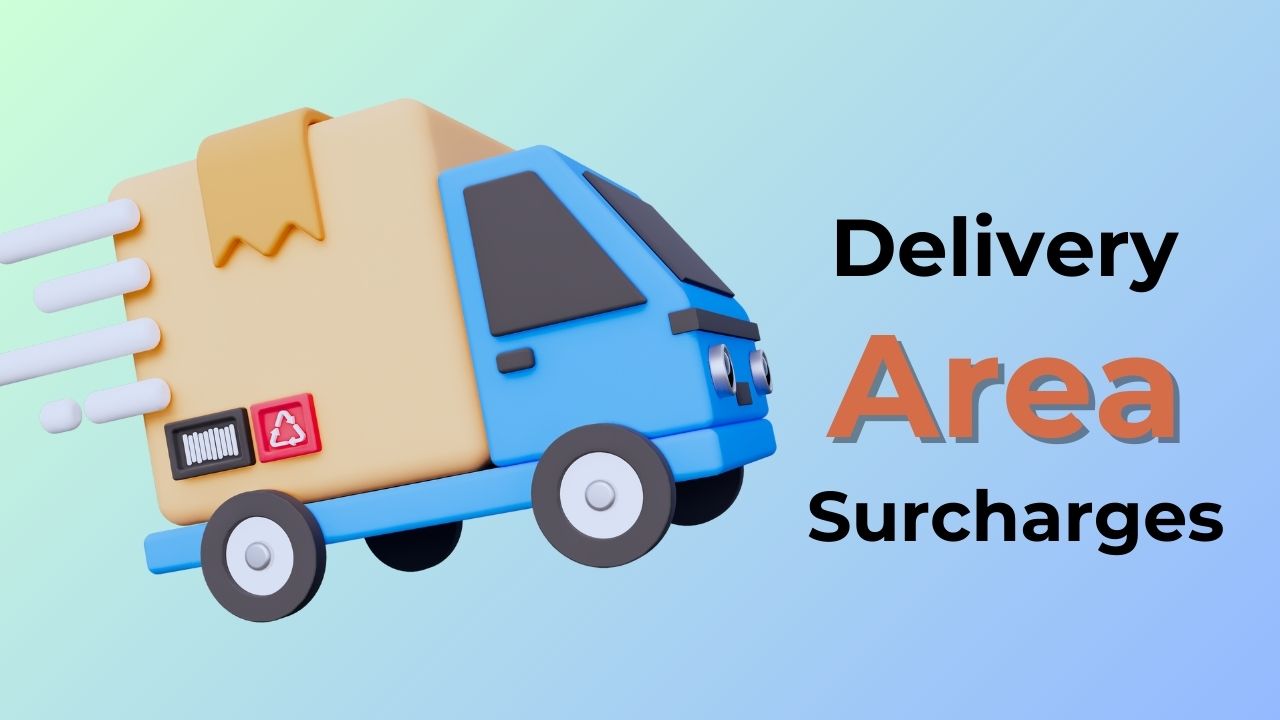Are you tired of being blindsided by unexpected delivery surcharges when you’re trying to send a package? This guide is here to help understand this often frustrating aspect of shipping. if you’re a small business owner trying to streamline your shipping costs or an individual looking to send a gift to a friend, navigating these additional fees can be a headache.

In this guide, we’ll discuss the debate of delivery area surcharges, shedding light on what they are, how they impact shipping expenses, and the factors that influence their application. By the time you finish reading, you’ll feel more confident about making informed decisions when it comes to shipping! Let’s get it!
| Table of Content |
What is Delivery Area Surcharge?
A Delivery Area Surcharge is an additional fee that a shipping carrier may charge for delivering a package to certain remote or less accessible areas. These surcharges typically apply to locations that are outside of the carrier’s standard delivery area or in areas that are harder to reach. The surcharge helps to offset the extra costs associated with delivering to these types of locations. It’s important for both businesses and customers to be aware of these surcharges when arranging for shipments to avoid unexpected costs. Checking with the carrier or shipping provider about specific delivery area surcharges can help in planning and budgeting for shipments.
When is the Delivery Area Surcharge Applied?
The delivery area surcharge is typically applied when the delivery location is in a remote or extended area that is significantly farther away from the shipping company’s distribution center or main delivery routes. This can include rural areas, areas that are difficult to access, or locations that require special transportation arrangements.
International and Domestic Shipments
For international shipments, delivery area surcharges may apply when the destination is in a remote or underserved international location. Similarly, for domestic shipments, these surcharges may be applied when the delivery location is in a remote or less accessible area within the country.
Carrier Policies
Different shipping carriers have their own policies and definitions of what constitutes a remote or extended area. It’s essential to review the specific terms and conditions of the carrier you are using to understand when the delivery area surcharge may be applied.
How to Calculate Delivery Area Surcharge Fees?

When it comes to calculating delivery area surcharge fees, there are several steps and considerations to keep in mind. This is an important aspect of logistics and distribution for businesses that offer delivery services, as it ensures that the costs associated with reaching different areas are appropriately accounted for. Here’s a step-by-step guide on how to calculate delivery area surcharge fees:
Step—1 Define Your Delivery Zones
Start by clearly defining the different delivery zones or areas that your business operates in. These could be based on geographical boundaries, postal/ZIP codes, or any other relevant demarcations.
Step–2 Identify Surcharge Criteria
Determine the specific criteria that will trigger a surcharge for each delivery area. This could include distance from your distribution center, level of demand, or any other factors that increase the cost of delivery to that area.
Step—3 Establish Surcharge Amounts
Decide on the surcharge amounts for each delivery area based on the criteria you’ve identified. For example, areas that are farther from your distribution center or have lower delivery density might incur higher surcharges.
Step—4 Integrate Into Pricing Structure
Incorporate these surcharge amounts into your overall pricing structure. This could involve updating your delivery fee schedule, adjusting product prices for specific areas, or clearly displaying surcharges at the checkout stage for customers to see.
Step –5 Regularly Review and Update
Delivery area surcharges should be regularly reviewed and updated to reflect changes in operational costs, demand patterns, or any other relevant factors. This ensures that your surcharge fees remain fair and reflective of actual costs.
Step –6 Communication
It’s important to effectively communicate these surcharge fees to your customers. Be transparent about why surcharges are applied to specific areas and ensure that customers are aware of these fees before placing their orders.
Step— 7 Utilize Technology
Consider using logistics and e-commerce platforms that offer built-in functionalities for managing delivery area surcharges. These tools can streamline the process and help ensure accuracy and consistency.
How to Reduce the Cost of Delivery Area Surcharge?
Reducing the cost of delivery area surcharges can be essential for businesses looking to optimize their shipping expenses. Here are some strategies to help mitigate these additional costs:
Use a 3PL (Third-Party Logistics Provider)
Third-party logistics providers (3PLs) can significantly reduce delivery area surcharges. By using their established networks and bulk shipping discounts, 3PLs can negotiate better rates with carriers, often absorbing or reducing the costs associated with delivery area surcharges. Companies like NextSmartShip offer integrated logistics solutions that can streamline your shipping processes, enhance delivery efficiency, and reduce overall costs.

They are a tech-driven global and local logistics provider that specializes in e-commerce order fulfillment for Direct-to-Consumer (DTC) brands. With warehouses located strategically in China, NextSmartShip offers a range of services designed to streamline shipping processes and reduce costs, including delivery area surcharges.
Optimize Delivery Routes
Utilizing route optimization software can help in planning the most efficient delivery routes, thus minimizing the instances where deliveries fall into high surcharge areas. With strategically planning routes and consolidating shipments, businesses can reduce the frequency of deliveries to surcharge-prone areas.
Negotiate with Carriers
Building a strong relationship with your shipping carriers can open the door to negotiating lower surcharges. If you have a high volume of shipments, you may be able to negotiate better terms and lower rates for deliveries in surcharge areas. Regularly reviewing your shipping contracts and discussing surcharge rates can lead to cost savings.
Conclusion
Understanding delivery area surcharges is crucial for managing shipping costs. These surcharges are additional fees applied to shipments delivered to remote or less accessible areas, impacting overall shipping expenses. To mitigate these surcharges and ensure cost-effective shipping, consider using Next Smart Ship. This innovative shipping solution utilizes advanced algorithms to optimize delivery routes, reducing the likelihood of incurring delivery area surcharges. With Next Smart Ship, businesses can streamline their shipping operations, minimize additional fees, and enhance overall cost-efficiency.



